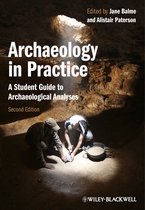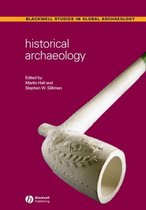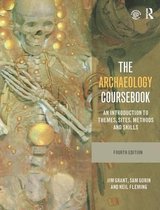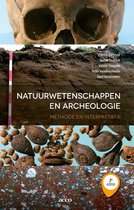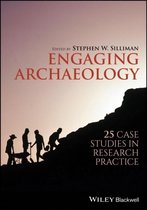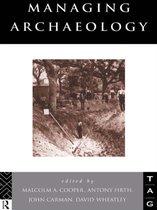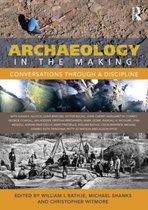E-Learning Archaeology
Afbeeldingen
Sla de afbeeldingen overArtikel vergelijken
Auteur:
H. van Londen
M.S.M. Kok
Co-auteur:
A. Marciniak
Samenvatting
This book is a contribution to a growing body of e-learning applications in archaeology and archaeological heritage. Its main aim is to discuss various facets of the Leonardo da Vinci project 'E-learning as a tool of knowledge transfer in the field of protection and management of archaeological heritage,' completed in the years 2007-2009 by six European partners in the context of other undertakings in distance learning solutions in archaeology over the last few years. The project's explicit objective was to exchange the best practices and innovative solutions in the field of the archaeological heritage of northern Europe. In particular, its major purpose was to design, develop, test, assess and implement web based training solutions in developing and upgrading vocational skills in this sector by preparing and conducting a multimedia e-learning course composed of fifteen interrelated modules. Furthermore, the project developed and implemented new methodology including the transfer of knowledge from the conventional to the e-learning format and the elaborated training methodology. The book is composed of an introduction and eleven chapters. Seven of them refer directly to various facets of the project such as its design, methodology, implementation, and evaluation. The remaining four contributions discuss current initiatives in implementing different distance and e-learning solutions in archaeology. The introductory chapter written by Mark Pluciennik debates extensively the benefits and failures of distance learning and e-learning as well as pressures for convergence between them as well as between e-learning and traditional learning. For the author e-learning is a complement mode of content delivery, which in places proves to be the most efficient one. However, it is clear that not all learning can be done through digital presentation, video or the manipulation of processed data. This is especially so in the discipline such as archaeology where one has to learn a range of practical and embodied skills. If we choose to implement e-learning solutions, however, it is necessary to provide a serious structural, resource and staff support being a prerequisite for supplying and maintaining high-quality and up-to-date education. The following seven papers cover various aspect of the project itself. They discuss the training content as well as methodology of the course production and training. In particular, they refer to the models and methods of distance training and their applicability for the sector of archaeological heritage and tools used in the distance learning process, use of multimedia, learning management systems supporting conducting distance learning, in particular the LMS/LCMS system's functionality as well as details of the course's preparation and implementation and the training process. An important part of the book is aimed at evaluating the course content and training process. It is based upon careful and systematic questionnaires that were collected among trainees in all participating countries after the completion of the course. This section contains also personal accounts of both trainers and trainees. The last two papers present two ongoing e-learning programme in archaeology implemented. These comprise project Arkeonet conducted by the Aranzadi Science Society (Spain) and a Leonardo da Vinci project Archaeology and Construction Engineering Skills (ACES).
Productspecificaties
Wij vonden geen specificaties voor jouw zoekopdracht '{SEARCH}'.
Overige kenmerken
- Verpakking breedte
- 157 mm
- Verpakking hoogte
- 15 mm
- Verpakking lengte
- 239 mm
- Verpakkingsgewicht
- 386 g
EAN
- EAN
- 9789078863533
Je vindt dit artikel in
- Categorieën
- Taal
- Engels
- Beschikbaarheid
- Leverbaar
- Studieboek of algemeen
- Studieboeken
Prijsinformatie en bestellen
De prijs van dit product is 14 euro en 95 cent.
Op voorraad
Nu besteld, dinsdag in huis
Verkoop door
Books 4 Life Amsterdam
- Bestellen en betalen via bol
- Inclusief verzendkosten, verstuurd door Books 4 Life Amsterdam
- 30 dagen bedenktijd en gratis retourneren
Rapporteer dit artikel
Je wilt melding doen van illegale inhoud over dit artikel:
- Ik wil melding doen als klant
- Ik wil melding doen als autoriteit of trusted flagger
- Ik wil melding doen als partner
- Ik wil melding doen als merkhouder
Geen klant, autoriteit, trusted flagger, merkhouder of partner? Gebruik dan onderstaande link om melding te doen.
